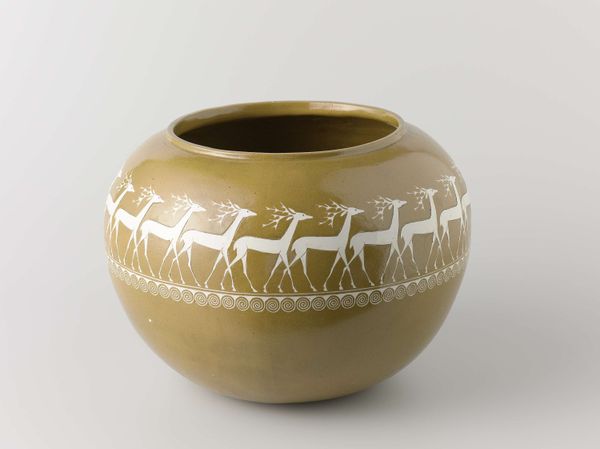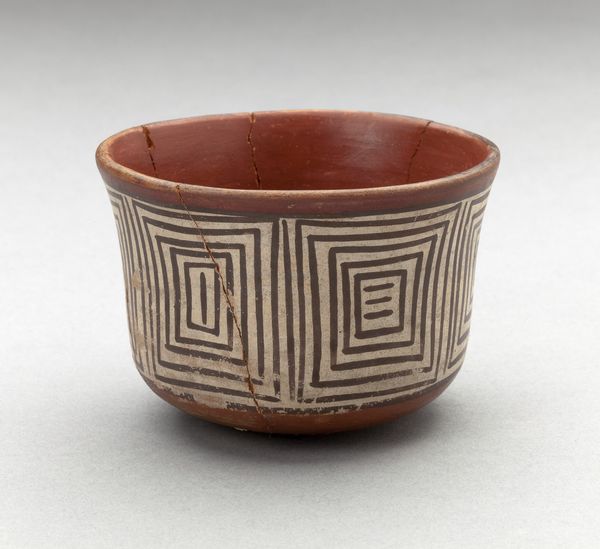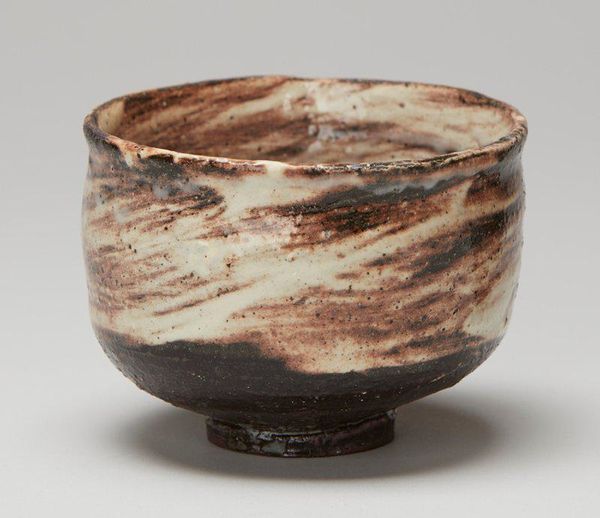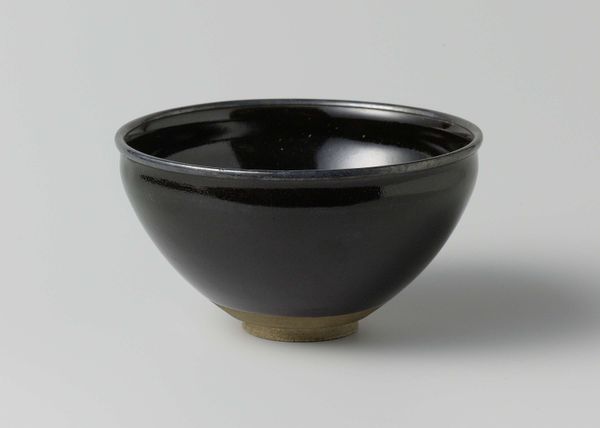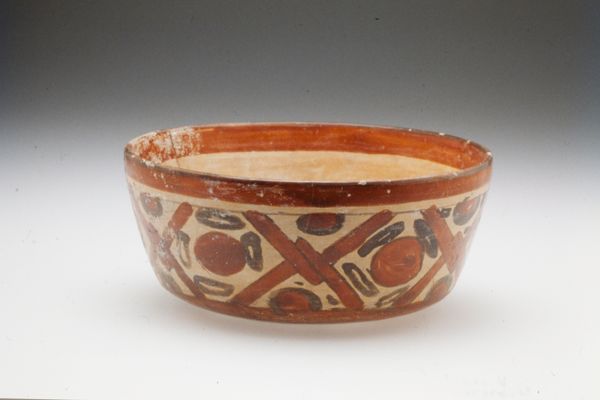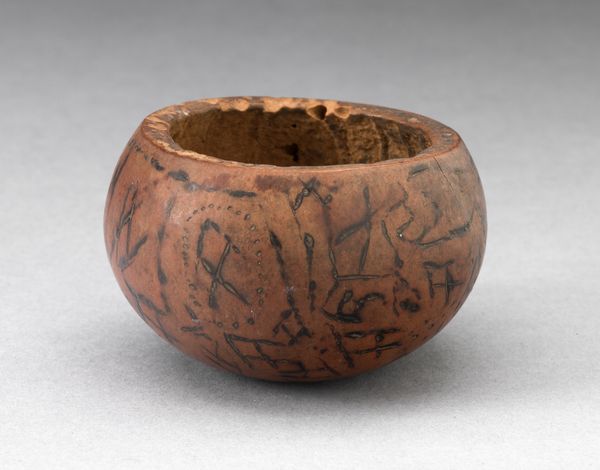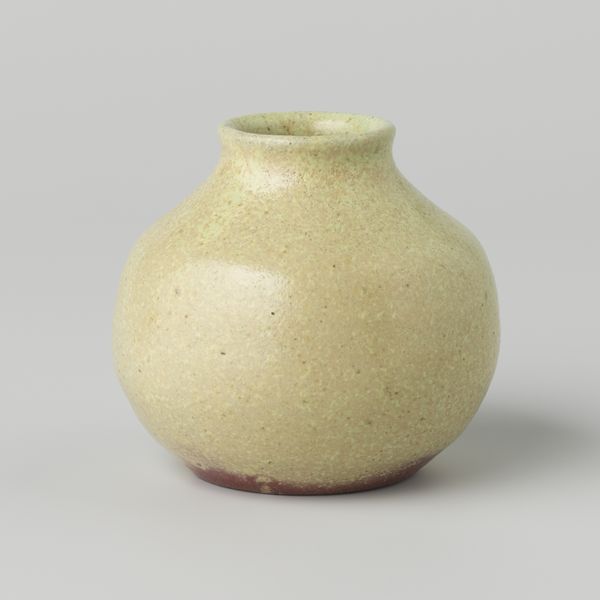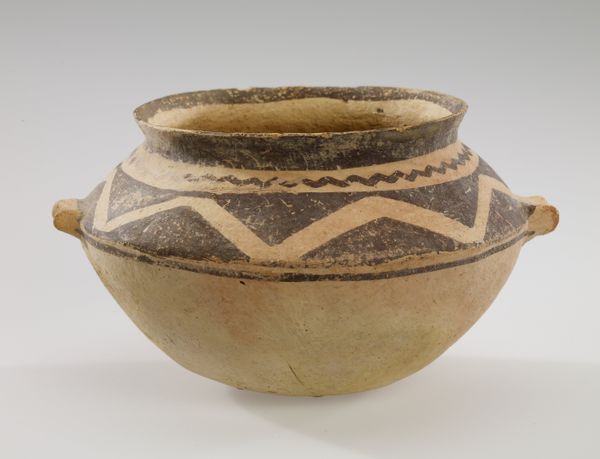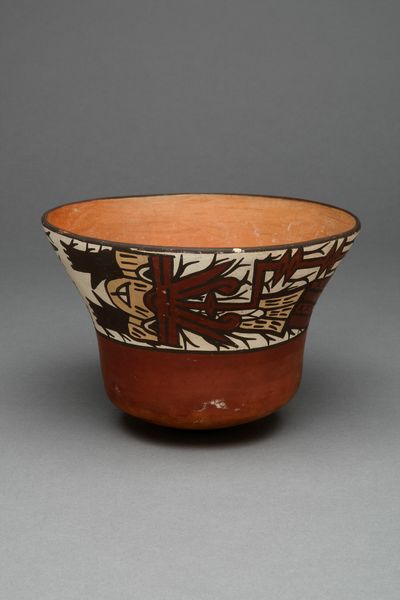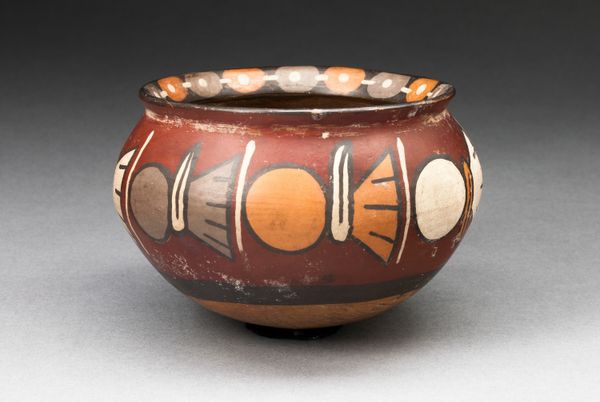
ceramic, earthenware
#
ceramic
#
earthenware
#
geometric
#
indigenous-americas
Dimensions: 1 1/2 × 2 1/4 × 2 1/4 in. (3.81 × 5.72 × 5.72 cm)
Copyright: Public Domain
Editor: Here we have a ceramic piece titled "Black jar hungawa", created by an unknown artist, some time in the past. The contrast between the smooth, dark lower portion and the geometric designs on the reddish-brown upper part immediately grabs my attention. What do you see in terms of its form? Curator: Focusing on the formal elements, notice how the artist divided the jar into two distinct visual zones. The lower portion, a solid expanse of black, provides a grounding base. Above, the reddish-brown section features incised geometric motifs. Consider the deliberate placement and the rhythm created by the repeated patterns. How does the interplay of positive and negative space contribute to the overall composition? Editor: It’s interesting how the light color appears more porous than the sleek, lower base, giving the artwork an impression of instability and of stability simultaneously. What is the relationship between the two colors and how do they emphasize the geometric motifs? Curator: Indeed. The stark chromatic contrast is crucial. The dark hue emphasizes the carved geometric figures, causing these light, earthen tones to emerge, defining the work as Indigenous art. In terms of semiotics, you might ask if certain patterns are figures? A closer examination reveals subtle variances within the supposedly repeated patterns, further complicating any simple interpretation. This suggests, to me, some hidden symbolic component that goes far beyond aesthetic considerations. How might this relate to structuralism and its emphasis on underlying structures and relationships? Editor: Fascinating! I hadn't considered how much the negative space informs the design. I see now that each little incision defines not just a pattern but also a deeper visual tension. Curator: Exactly. Art, through formal structure, asks far more questions than it can answer. What further inquiries does this piece evoke in you now? Editor: That the form and design, in Indigenous art, isn't mere form: I am curious to look closer into the meaning of the designs themselves! Thanks for offering the idea. Curator: My pleasure. Remember that analyzing art means engaging its components through questions that will require much exploration and dedication.
Comments
No comments
Be the first to comment and join the conversation on the ultimate creative platform.
